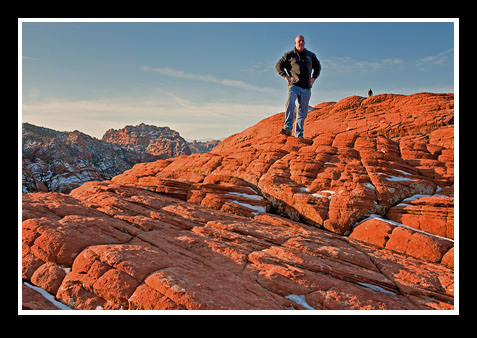Text and Photos ©Jack Graham Photography all rights reserved
“I like to feel that all my best photographs had strong personal visions and that a photograph that doesn’t have a personal vision or doesn’t communicate emotion fails. “
“Those who seek a special place where their photography will come alive are always disappointed unless they already know how to see from the heart”
Galen Rowell
I’ll be publishing my Series 2 of my E book series in a few weeks. One of the articles included is “My 10 Commandments of Nature Photography. One of my 10 commandments is” Photographing less and Seeing More”. In addition, my good friend Bob Kulon (www.bobkulonphoto.com ) and I are developing a podcast (coming soon!) called www.18percentgraymatter.com . Our first topic is Learning to See.
This is one of the most important components of making quality images that should be practiced, but is too often neglected. In my photography workshops, I stress this component. However, even though I preach slowing down and learning to see, folks ignore my pleas and shoot, shoot and shoot, without looking and studying the location.
I bet that most of you reading this will say to yourselves, “I already so this”. Do you? I bet even if you do, you don’t slow down enough. I know many times I have to remind myself to practice what I preach.
Beating the Drums…..This is an area I am really stressing this year in my workshops. Learning to see and developing your vision is going to be covered, discussed and stressed, just as much if not more….than composition, exposure and all the things that most workshops have in their curriculum. I intend “Beat the Drums” and make this a priority with my attendees.
 One can not develop photographic vision, until you learn to see.
One can not develop photographic vision, until you learn to see.
Exposure, sharpness and correct composition are the three ingredients in making a pleasing photograph. Proper focus and exposure is a function of your equipment and your eye, and your ability to be proficient in using your lenses and eye properly. Even automatic metering is quite accurate much of the time. By using a tripod and understand depth of field even using auto focus at times will again allow a reasonably good image to be produced.
On the other hand, composition is dependent on you and your ability to encompass what is necessary to produce the desired results. No matter how great you focus correctly, or expose correctly, if the image is uninteresting, will be boring to the viewer. The old saying “Garbage in = Garbage out” is the order of the day when it comes to proper, or pleasing compositions. All the expensive equipment you want to carry around can not fix an uninteresting composition.
“I think that cognitive scientists would support the view that our visual system does not directly represent what is out there in the world and that our brain constructs a lot of the imagery that we believe we are seeing. “
“Lack of attention to detail fails to explain why a 1999 camera in the hands of a meticulous Ph.D. who studies the instruction manual, won’t produce as many publishable images as a 1939 camera in the hands of a person with a refined photographic eye”……………………Galen Rowell Photographing Less and Seeing More
“Human Nature” So you book your flight to some really interesting area (lets take the Columbia River Gorge here in Oregon, for example) and let’s say you’re from Ohio, where, though there are some great waterfalls, they are nothing like the (literally) hundreds, here in the gorge. You fly out, arrive here in Portland, get your rental car, check in at your hotel and drive the ½hour – 45minutes or so to one of the many easily accessed waterfalls.
In another few short minutes you are face to face with a 300+foot waterfall, splashing down torrents of water and throwing the mist in your face because you are about 100’ away. I know how I was the first time I experienced this. So, you hurry to take out your equipment, put the camera on the tripod (hopefully) and shoot away. (By the way, the waterfall isn’t going away!)
This is human nature. You are from Ohio, and are simply blown away with the majesty of what you’re seeing, staring down this 300+ waterfall 150 feet in from of you. Then, the bad news. You get back to your hotel, look at your images and are not really pleased with your results. Assuming you know how to use your equipment properly, most likely you did not take the time to see connect with the environment, study the area, light, possibilities…. and look for possible components to form a pleasing photograph.
Look at these two images, both different, both say different things. You have to look around and decern all of the possibilities.
“Great photographers always know, either intuitively or scientifically, many subtle nuances of how humans perceive visual information. Photographers who lack this knowledge go through life virtually shooting blind”….. Galen Rowell
“The Blind Squirrel”…………….Yes even the blind squirrel finds a nut, but more often than not, he goes hungry.
Too often, I see photographers in the field, often with much better equipment than I, approaching a subject hastily, not understanding the subject, the environment, the light and more… that goes into making an artistic photograph. I hear shutters clicking like machine guns. I always study what other photographers in the field go about their business. Sometimes it’s quite amusing. Now, I am not talking about the tourist who may drive from spot to spot, jump out with their point and shoot and take a snapshot,
I am talking about either pros, serious armatures or beginners who obviously has some high quality equipment. The vast majority probably don’t know how to properly use their sometimes very expensive equipment, let alone know how to see an image properly. More often than not these images fail miserably.
I have actually had one person tell me that taking photographs is like buying lottery tickets, the more you buy (frames you shoot); the more likely you are to get a good one.
Rubbish!
“The landscape is like being there with a powerful personality and I’m searching for just the right angles to make that portrait come across as meaningfully as possible. “
Galen Rowell
“The Hunt is Better than the Kill” …..
 Not only are these images made this way likely to fail, the photographer may as well be handholding a cheap point & shoot camera. He or she has removed any aesthetic feeling of the scene, both photographable as well as the self enjoyment that a location can deliver. There is no doubt that the photographer that slows down, studied the possibilities will always walk away with a superior image. It is not uncommon for me to be or on a days shoot and come back with 10 -15 frames. I often remember my days using film, and use those as a reminder that slowing down is the key to success. If I have one successful image per day in the field, I would be a happy guy!
Not only are these images made this way likely to fail, the photographer may as well be handholding a cheap point & shoot camera. He or she has removed any aesthetic feeling of the scene, both photographable as well as the self enjoyment that a location can deliver. There is no doubt that the photographer that slows down, studied the possibilities will always walk away with a superior image. It is not uncommon for me to be or on a days shoot and come back with 10 -15 frames. I often remember my days using film, and use those as a reminder that slowing down is the key to success. If I have one successful image per day in the field, I would be a happy guy!
What slowing down does is allows up to see, to determine the best angle, position or location to set up your tripod. Learning to see allow one to take the time necessary to make a photograph that is artistic rather than a post card shot.
“Suggestion”………….. I recommend that all photographers, from the beginner, to the pro photographers (believe me the big name pro’s have learned to slow down), learn to slow down, enjoy the moment, where ever you are and become part of the environment. Leave you’re camera in the bag and enjoy the sights, smells and sounds of wherever you are. Look around 360 degrees. Then at some point, get out your camera and study the area around even more and find the correct subject (and maybe you’ll find there isn’t one!) and the light, with perhaps a good background, foreground etc. that will make your image a winner.
FINALLY: Please check out my workshop schedule for 2011. 2012 will be published soon. 2012 Workshops in China (I’ll be doing a whole blog article on this as we’ll be going to areas virtually untouched by other photography workshop folks), Iceland, the Big Island, Hawaii and more will be presented. REGISTRATION FORM 2011v2







Great reading and inspiring words. I agree completely with what you are saying. A person cannot create great images without learing how to see them in the first place.